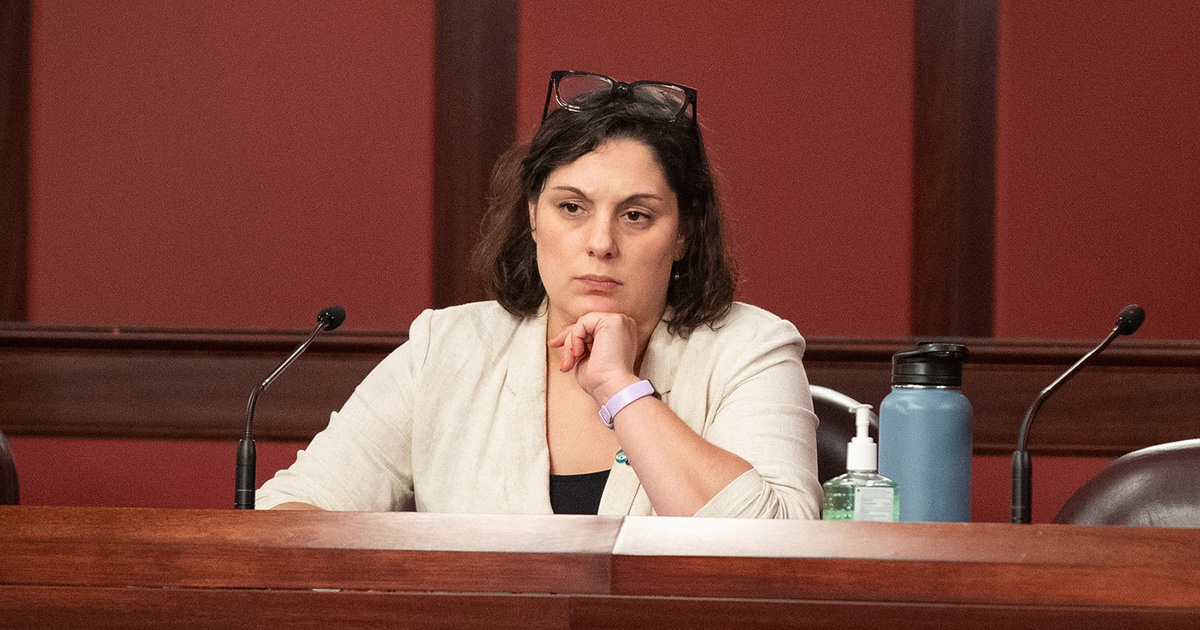
Artículo de opinión de la senadora Amanda M. Cappelletti
Existe la idea generalizada de que los primeros intervinientes (agentes de policía, bomberos, técnicos de emergencias médicas y veteranos) son duros. Vemos a los primeros intervinientes como expertos con una formación exhaustiva, preparados para afrontar multitud de situaciones estresantes y de alto riesgo. Del mismo modo, percibimos a los veteranos como personas fuertes y abnegadas, capaces de afrontar situaciones extremas con disciplina y valentía. En muchos casos estas generalizaciones pueden ser ciertas, pero creo que rara vez cuentan toda la historia.
Por encima de todo, los primeros intervinientes y los veteranos son personas. Son susceptibles de padecer problemas de salud mental, como todo el mundo, y en muchos casos son más propensos a sufrir traumas, estrés y adicciones debido a la naturaleza de su trabajo y sus experiencias. Sin el apoyo de los legisladores y sin un tratamiento que pueda hacer frente a estos problemas de salud mental, nuestros equipos de primera intervención y veteranos se ven a menudo abocados a luchar por su cuenta y a recurrir a la autolesión por arma de fuego para aliviarse.
Según Everytown Research and Policy, una media de 4.200 veteranos mueren cada año por suicidio con arma de fuego, unas 11 muertes al día. Los Centros para el Control de Enfermedades informan de que los agentes del orden y los bomberos tienen más probabilidades de morir por suicidio que en acto de servicio. Los socorristas tienen 1,39 veces más probabilidades de morir por suicidio que el resto de la población. Estas comunidades están en crisis.
Recientemente organicé una mesa redonda sobre este tema con la congresista Madeleine Dean, líderes de Action Tank y Ceasefire PA, y veteranos y personal de primera intervención de Pensilvania. Nuestro panel identificó muchos factores que están alimentando las tasas de suicidio entre estas comunidades, incluyendo el estigma en torno al tratamiento de la salud mental, el aislamiento y una mayor probabilidad de poseer un arma de fuego. En cuanto a las soluciones, la lista es larga y requiere la colaboración entre funcionarios públicos, líderes locales y miembros de la comunidad. La respuesta a esta cuestión es compleja, como el propio problema, pero salí de nuestra conversación con el compromiso de generar un cambio.
A menudo hablamos de lo que puede hacerse para combatir la violencia con armas de fuego después de una tragedia, pero hay muchas medidas que pueden y deben tomarse de forma preventiva. Por ejemplo, financiar el acceso a un tratamiento de salud mental de calidad es una solución previa que puede proporcionar a los veteranos y a los primeros intervinientes una salida a su dolor y a su angustia emocional. Durante nuestra mesa redonda, la congresista Dean habló de las medidas que tomó para conseguir que se invirtieran 7,5 millones de dólares de fondos federales en programas de prevención del suicidio y apoyo a los agentes que sufren estrés y problemas de salud mental. Y en Pensilvania, la Legislatura aprobó recientemente un presupuesto para 2021-2022 que asigna 30 millones de dólares a programas comunitarios de prevención de la violencia, lo que dará un impulso a los servicios de base de salud mental, formación laboral, tutoría y educación que mejor conocen las necesidades de sus comunidades. Estas inversiones son importantes, pero deben ir acompañadas de medidas legislativas.
Retrasar el acceso inmediato a las armas de fuego es otra solución de sentido común que puede salvar vidas. De hecho, soy copatrocinador de un proyecto de ley que establece un periodo de espera de 72 horas para todas las transferencias de armas de fuego. Las investigaciones han demostrado que las leyes sobre periodos de espera reducen tanto los suicidios como los delitos violentos. Muchos estudios sugieren que la mayoría de los supervivientes de suicidio, por ejemplo, contemplaron sus acciones sólo durante un breve período -a menudo menos de 24 horas- antes de hacer un intento de suicidio.
Las Órdenes de Protección de Riesgo Extremo (ERPO, por sus siglas en inglés) también pueden mantener alejadas las armas de fuego de personas que temporalmente puedan suponer una amenaza para sí mismas o para los demás. En otro proyecto de ley que patrocino con varios de mis colegas demócratas, pedimos que la ERPO conceda a los familiares y a las fuerzas del orden la capacidad de solicitar a un tribunal que suspenda temporalmente el acceso de una persona a las armas de fuego si existen pruebas documentadas de que esa persona es una amenaza para sí misma o para los demás. La persona sujeta a esa orden deberá entregar su(s) arma(s) de fuego a la policía y no podrá comprar, vender ni poseer otras armas de fuego hasta que un juez lo considere seguro, pero sin exceder de un año.
Además del cambio de políticas, la educación sobre la salud mental, la prevalencia del suicidio por violencia con armas de fuego y el almacenamiento seguro de las armas de fuego puede capacitar a los miembros de la comunidad para que se defiendan mutuamente. Por ejemplo, tres sencillas buenas prácticas para el almacenamiento de armas de fuego -descargar la munición, cerrar el arma con llave y guardar el arma y la munición en lugares separados- pueden impedir el acceso inmediato a un arma de fuego y disuadir a una persona de tomar una decisión impulsiva y letal.
Lo diré una vez más: la reforma de las armas de fuego es una cuestión compleja. No hay una solución simple, sino una multitud de acciones, leyes y educación que pueden detener el preocupante aumento de la violencia con armas de fuego que estamos viendo hoy en día, tanto en las tasas de homicidio como de suicidio. En el debate más amplio sobre la seguridad de las armas de fuego, necesitamos controles de antecedentes universales, más normas sobre la notificación de armas de fuego perdidas y robadas, y seguir trabajando para sacar las armas fantasma de los barrios. Para abordar específicamente los problemas a los que se enfrentan los primeros intervinientes y los veteranos, tenemos que dar prioridad al acceso a servicios de salud mental de calidad y aplicar políticas que incluyan protecciones para aquellos que puedan suponer un mayor riesgo para sí mismos o para los demás.
Me apasionan estas políticas y acciones porque pueden salvar vidas. Pertenezco a una familia que posee armas de fuego, pero también apoyo las leyes de sentido común que ofrecen protección y seguridad. No estoy luchando por la ilegalización o restricción de las armas de fuego. Lucho por proteger a las personas con el mismo ímpetu que he visto en nuestros primeros intervinientes y veteranos.
